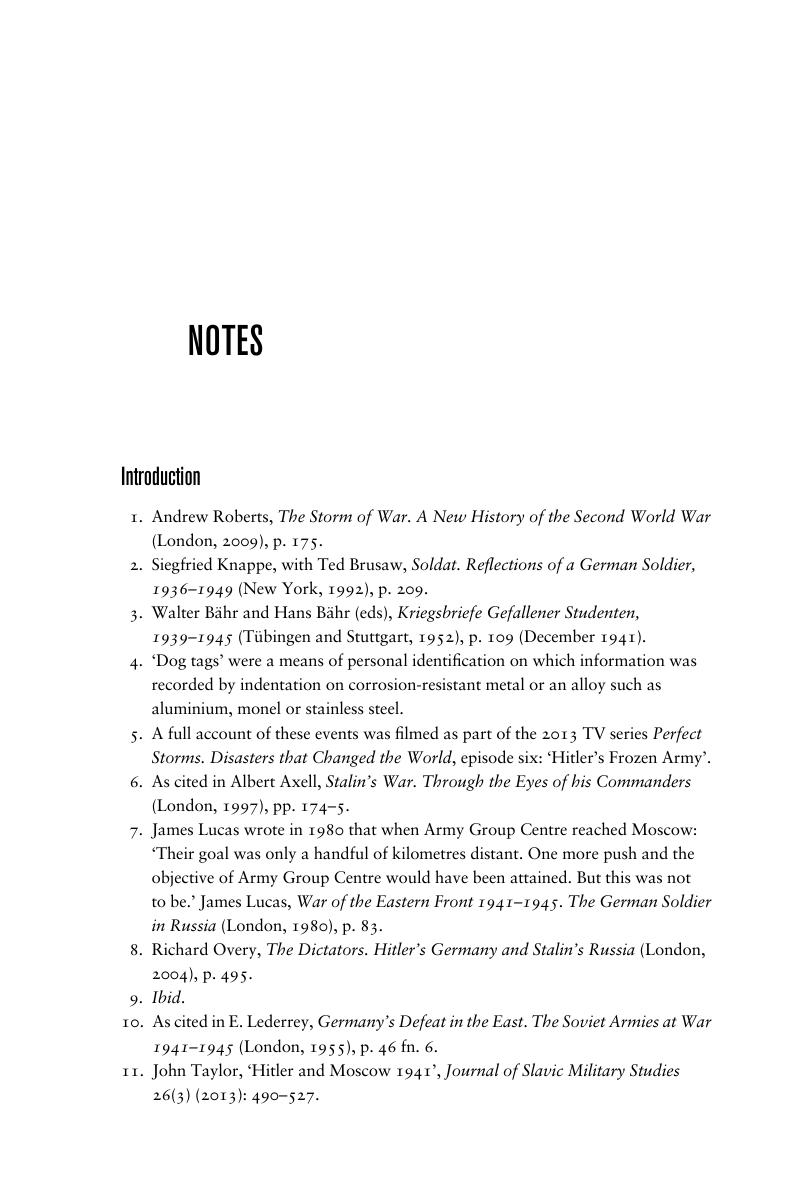Book contents
- Frontmatter
- Contents
- List of illustrations
- List of maps
- List of table
- Acknowledgements
- Glossary
- Tables of military ranks and army structures
- Introduction
- 1 Parallel wars
- 2 The idle Typhoon
- 3 Preparing the final showdown
- 4 The Orsha conference
- 5 Typhoon re-launched
- 6 The long road to Moscow
- 7 Victory at any price
- 8 The frozen offensive
- 9 Down to the wire
- 10 To the gates of Moscow
- Conclusion
- Notes
- Bibliography
- Index
- References
Notes
Published online by Cambridge University Press: 05 February 2015
- Frontmatter
- Contents
- List of illustrations
- List of maps
- List of table
- Acknowledgements
- Glossary
- Tables of military ranks and army structures
- Introduction
- 1 Parallel wars
- 2 The idle Typhoon
- 3 Preparing the final showdown
- 4 The Orsha conference
- 5 Typhoon re-launched
- 6 The long road to Moscow
- 7 Victory at any price
- 8 The frozen offensive
- 9 Down to the wire
- 10 To the gates of Moscow
- Conclusion
- Notes
- Bibliography
- Index
- References
Summary

- Type
- Chapter
- Information
- The Battle for Moscow , pp. 319 - 397Publisher: Cambridge University PressPrint publication year: 2015



